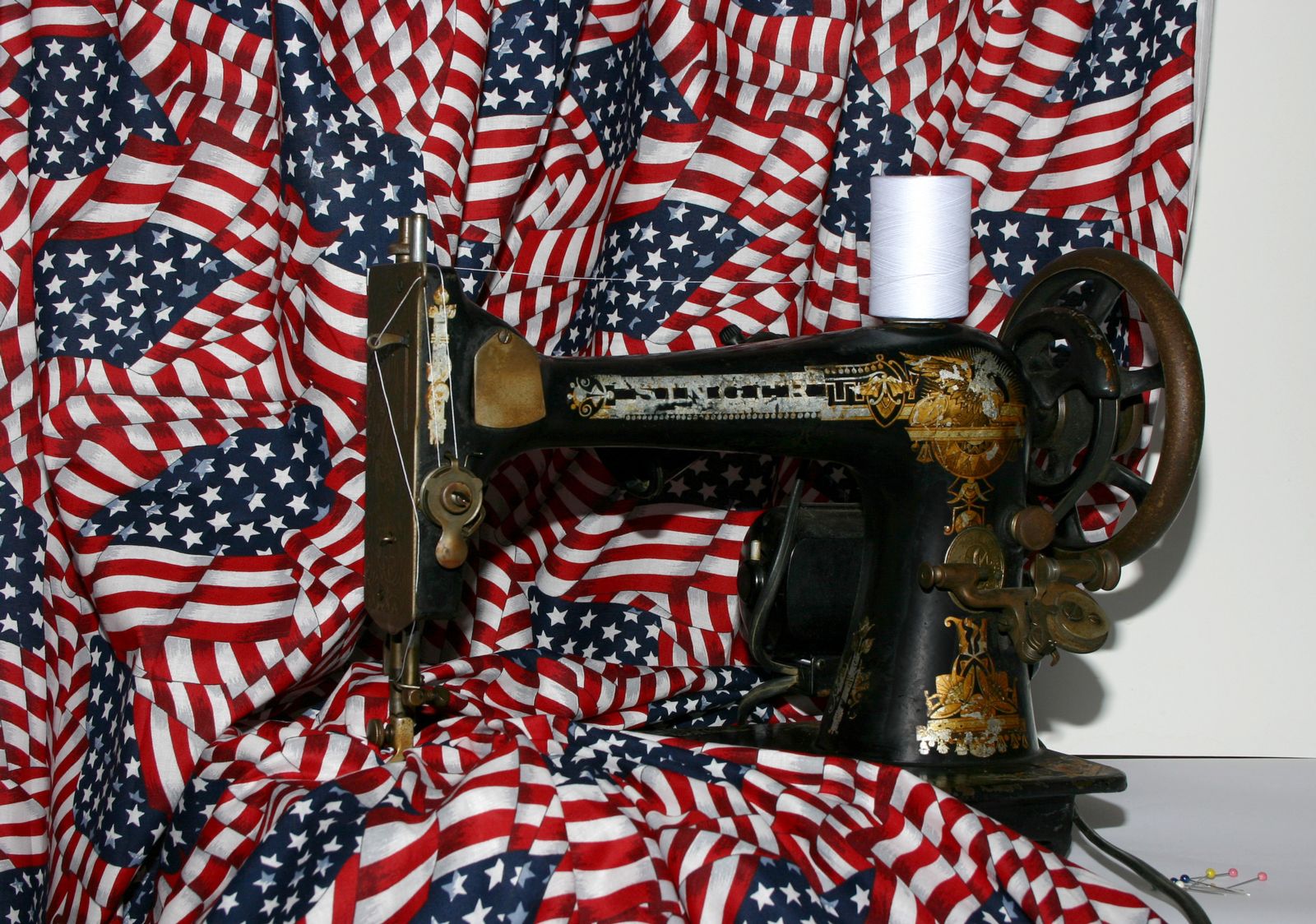There's Keystone in every Great invention
If Only Betsy Ross Had a Sewing Machine before Flag Day
June 11, 2014
In May 1776 three representatives from a secret committee of the Continental Congress showed up at Betsy Ross’ upholstery shop. Betsy was able to hand sew the newly-designed flag for a new nation in advance of the signing of the Declaration of Independence in July. A year later, in June 1777, the Continental Congress, hoping to promote national pride, adopted it as the national flag.
It wasn’t until May 1916 that celebrating the anniversary of 1777’s Flag Resolution was officially established with a proclamation by President Woodrow Wilson. While Flag Day was observed in various communities for years after Wilson's proclamation, it was not until August 1949, that President Truman signed an Act of Congress designating June 14th as National Flag Day.
Of course, flags are no longer sewn by hand. But how did we get from Betsy Ross to today’s modern sewing machines?
As early as 1755 there was a British patent issued for needle designed for a mystery machine – but nothing ever came of that. Another English inventor was issued the first patent for a complete sewing machine in 1790 – but it never was proven to work. Neither did a German machine in 1810. Or an Austrian one in 1814. Or an American one in 1818. Barthelemy Thimonnier invented the first functional machine in 1830 in France, and nearly paid with his life. A group of angry tailors stormed his garment factory and burned it to the ground rather than face unemployment. That put an end to his machine.
 Sixteen years later, the first American patent for a sewing machine was issued to Elias Howe. But he struggled to solicit any interest in his machine… and then later to protect his patent from imitators.
Sixteen years later, the first American patent for a sewing machine was issued to Elias Howe. But he struggled to solicit any interest in his machine… and then later to protect his patent from imitators.
Sewing machines finally went into mass production in the 1850's when Isaac Singer built the first commercially successful machine. At this point patent chaos broke out in the sewing machine business. A long series of law suits followed and were only settled when the big companies, including Wheeler & Wilson and Grover & Baker, joined forces and fought together to protect their monopoly.
Mechanical sewing machines were used from the mid-1800s until the 1960s and offered a basic straight stitch; some of the fancier models could also zigzag stitch. With the invention of the electronic sewing machine in the 1970s more precision and a variety of stitching styles were introduced. The feeding mechanism would guide the fabric making detailed patterns easier to create. Now, companies use computerized sewing machines. These “smart” machines have all the features of an electronic machine but with stored patterns and other instructions in its memory system. These machines come preprogrammed and offer a variety of stitch options and functions. Program a pattern in, position the fabric and the computerized sewing machine is able to complete the work with very little human interaction.
Betsy Ross would be amazed!
And we’re amazed at how many of these machines can utilize our products. It is likely that you’ll be able to find Fuse Clips and Holders, Anti- Vibration Grommets, Washers, Screws and Panel Hardware, Test Points products in an electronic sewing machine today.
No matter how our flags are made today, but be sure to raise a flag on this year’s Flag Day, June 14th. Enjoy and celebrate!




 Check out our Blog
Check out our Blog